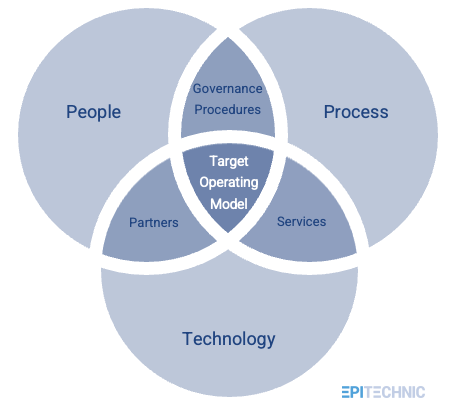
The way that businesses operate is changing, and this change has been accelerated by the Covid-19 pandemic that has forced a massive shift in the way that people work. Cloud computing has enabled this change, and the amount being spent on public cloud services now outstrips that of traditional IT. That trend is only going to continue over the next few years as more workloads are migrated to the cloud.
When an organisation decides to migrate its services from a traditional on-premise environment to the cloud there are many factors that they need to consider, and these all come with their own challenges.
As with any organisation change, one of the most common challenges faced is resistance from people
Cloud migration is disruptive to an organisation with lots of new systems and processes, and maybe even organisational changes. And as with any organisational change, one of the most common challenges faced is resistance from people. These changes will cause a level of resistance within organisations and unless this is carefully managed it can severely disrupt a cloud transformation programme. Left unchecked, this resistance can unsettle an organisation resulting in unhappy staff and an inefficient organisation. If the human element of migration is not handled correctly, it will struggle to be a success.
The key to getting people onboard is to get strong commitment from leadership, ensuring that they are delivering a clear and consistent message to their staff about the benefits and objectives of the changes that are being made around them. Senior management needs to understand the need for change, and the business benefits it will bring so that they openly support it, creating a positive atmosphere that will encourage adoption of the changes.
Once you have buy-in from the top level, you need to focus on the people that are being directly impacted by the change.
Once you have buy-in from the top level, you need to focus on the people that are being directly impacted by the change. To bring them on the journey with you, you need to invest in them. In the long-term, the cloud will make life easier for teams but adjusting to the changes can still be problematic.
Investing in proper training for staff will ensure that they are not just along for a ride in the journey to the cloud, but they can take the wheel, helping to drive the adoption of new processes and tools. Without training, they are more likely to resist change and revert to using old processes and tools. Once trained, make them cloud champions so that they can evangelise the benefits of the changes being made to their peers. This will trickle through the organisation and will alleviate fears that people have about how the changes are going to impact them. This will drive adoption and greatly improve the chances of a successful cloud transformation.
However, no matter how much management support there is, and how well implemented a training scheme for existing staff is, something as complex as a cloud migration will need external help to support the migration. Existing staff will likely still have their day jobs to keep them occupied, even if they have been seconded to a cloud transformation programme, and although trained they will lack the deep experience needed for the successful delivery of a transformation of this magnitude.
You should bring in dedicated experts to run and deliver your cloud programme
Transforming a business from traditional IT to a cloud-based organisation is no small undertaking, and it must be done correctly if the benefits of being in the cloud are to be realised. That is why you should bring in dedicated experts to run and deliver your cloud programme. These experts should work closely with your existing teams to ensure that they can impart their knowledge and experience so that your organisation can be self-sufficient once the transformation is complete.
The benefits of cloud computing for an organisation are immense, but they can only be realised if the transformation is carefully managed, and the right investment is made in both internal teams but also external specialists.
Do your cloud transformation wrong and your people will be disenfranchised, costs will spiral, and business will suffer.
But do it right, ensuring your organisation achieves equilibrium – the right balance of skills and knowledge, adopting new ways of working, you will have the right mix of agility and security to propel and support innovation and achieve business success.











